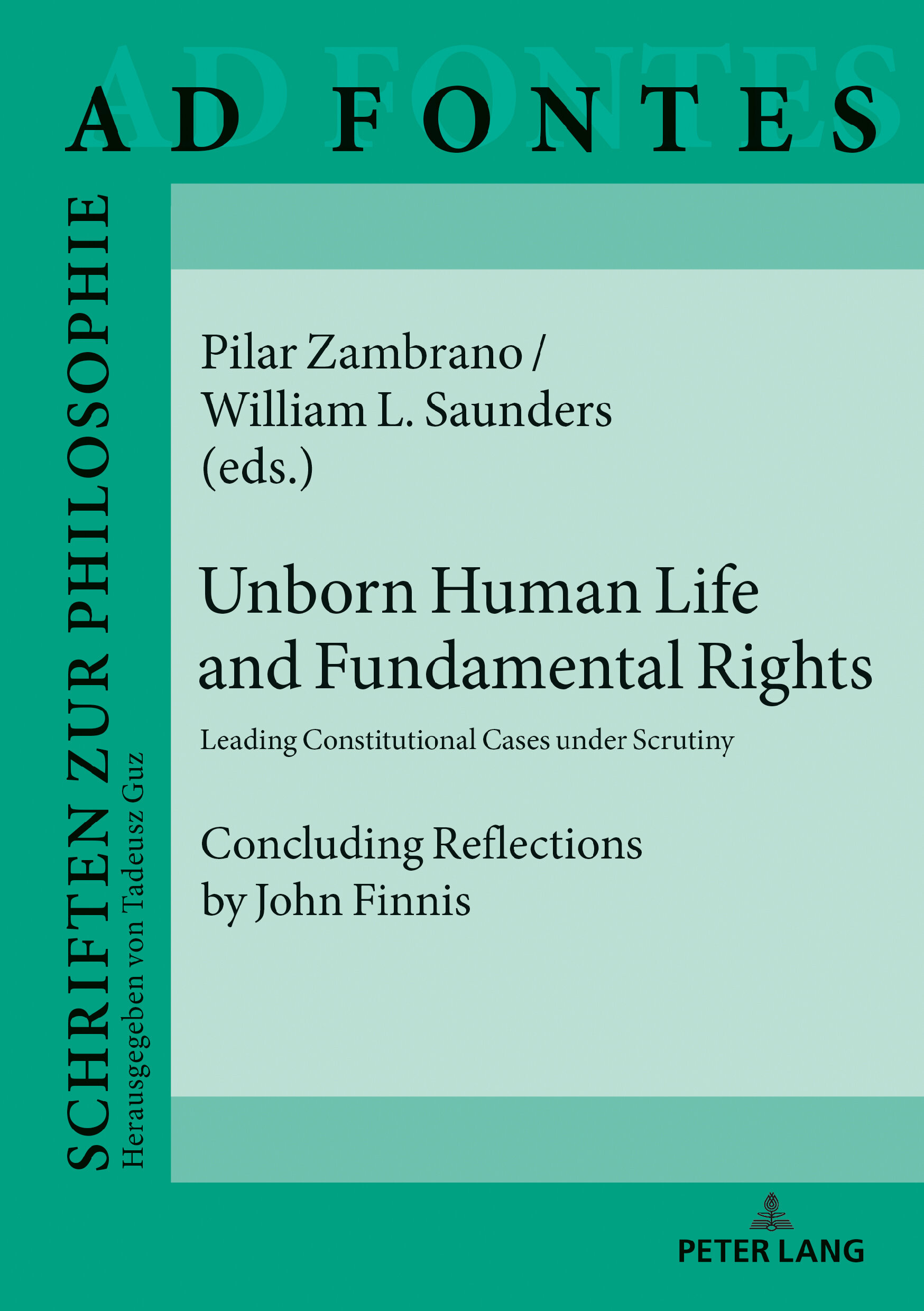William Saunders, J.D., is a graduate of Harvard Law School and serves as the Director of the Master of Arts in Human Rights at The Catholic University of America. This graduate program, developed by the Institute for Human Ecology, offers a distinctively Catholic perspective to the study of Human Rights. RFI President Thomas Farr describes the program as “standing at the very core of Catholic University’s mission to teach its students the deep meaning and profound value of human rights grounded in the dignity of the human person.” Farr continues:
At the center of all human rights is its linchpin—without which the others cannot properly defend true human dignity—religious freedom. No one is better qualified to teach its role in all fundamental rights than the director of the Human Rights Program, William Saunders.
We sat down with Professor Saunders to discuss his most recent work, co-edited by Pilar Zambrano, Unborn Human Life & Fundamental Rights: Leading Constitutional Cases under Scrutiny.
Did any events or people motivate or inspire you to write this book?
This work was dedicated to professor Mary Ann Glendon of Harvard Law School. We’re very fortunate to have her on the Advisory Board for the M.A. in Human Rights program at Catholic University, along with Religious Freedom Institute President, Thomas Farr. The writings of St. John Paul II also had a tremendous impact on me.
Why do the legal cases in other countries matter for the legal protection of the unborn in the U.S.?
The Constitution is the “supreme law of the land,” but it is interpreted by the Supreme Court. The court has paid attention to international “norms” in interpreting the Constitution in the past, and anti-life activists are trying to convince it to do so regarding abortion. Thus, even if Roe v. Wade were overturned, the court might impose abortion if it is viewed as an “international norm.”
What are basic Human Rights, and who functions as the “enforcer” of those rights?
Fifty-five million innocent people were killed in World War II. After the war ended, countries banded together to form the United Nations (UN), and the UN issued the Universal Declaration of Human Rights to ensure this never happened again. The Declaration states that everyone has the right to life, endorses religious freedom, and affirms that the family is the fundamental unit in society and ought to be protected by law. The statements the Declaration makes are ones that any sensible American would agree with.
Unfortunately, many left-wing groups have tried to change the definition of rights listed in the UN’s Declaration to fit their own preferences. In our M.A. in Human Rights program, students look at Human Rights and the Declaration through the lens of Catholic Social Thought in order to understand this international struggle.
While conducting your research, did you come across any information that shocked or surprised you?
I was saddened to see that the legal protection of Human Rights is sliding in the wrong direction. We all need to be aware of that. The courts play a big role in that slide downhill. We have a tremendous final chapter by legal scholar John Finnis that analyzes the whole process.
Many people have personal and moral objections to abortion, but they feel uneasy about legislation that grants legal protection to the unborn. How will the cases in your book help them?
After reading the book they will understand how abortion is inconsistent with any sound understanding of Human Rights. They will also realize that the Constitution makes no provision for abortion at all. It is the duty of every human being to protect the innocent, the voiceless, and the vulnerable. Horrors such as slavery and eugenics show that it is easy for us to forget that all human beings are truly equal. Either every human being is protected, or no human being can be certain they will not be excluded from the protection of the law in the future.
To learn more about Professor Saunders, the M.A. in Human Rights program, the Institute for Human Ecology, or The Catholic University of America, click here.
THE RFI BLOG

Is Egypt’s Government Trying To Take Over Christianity’s Most Important Monastery?

Does Southeast Asia Lead the World in Human Flourishing?

RFI Leads Training Session on Religious Freedom Law and Policy for U.S. Army War College

Oral Argument in Charter School Case Highlights Unconstitutional Motives Behind OK Attorney General’s Establishment Clause Claim

Largest Longitudinal Study of Human Flourishing Ever Shows Religion’s Importance
CORNERSTONE FORUM

Reaffirming Religious Freedom: Bridging U.S. Advocacy and Iraq’s Constitutional Framework

Political Polarization, Same-Sex Marriage and Religious Liberty

Bridging the Gap Between International Efforts and Local Realities: Advancing Religious Freedom in the MENA Region

Challenges to Religious Freedom in Iraq and the Critical Need for Action



